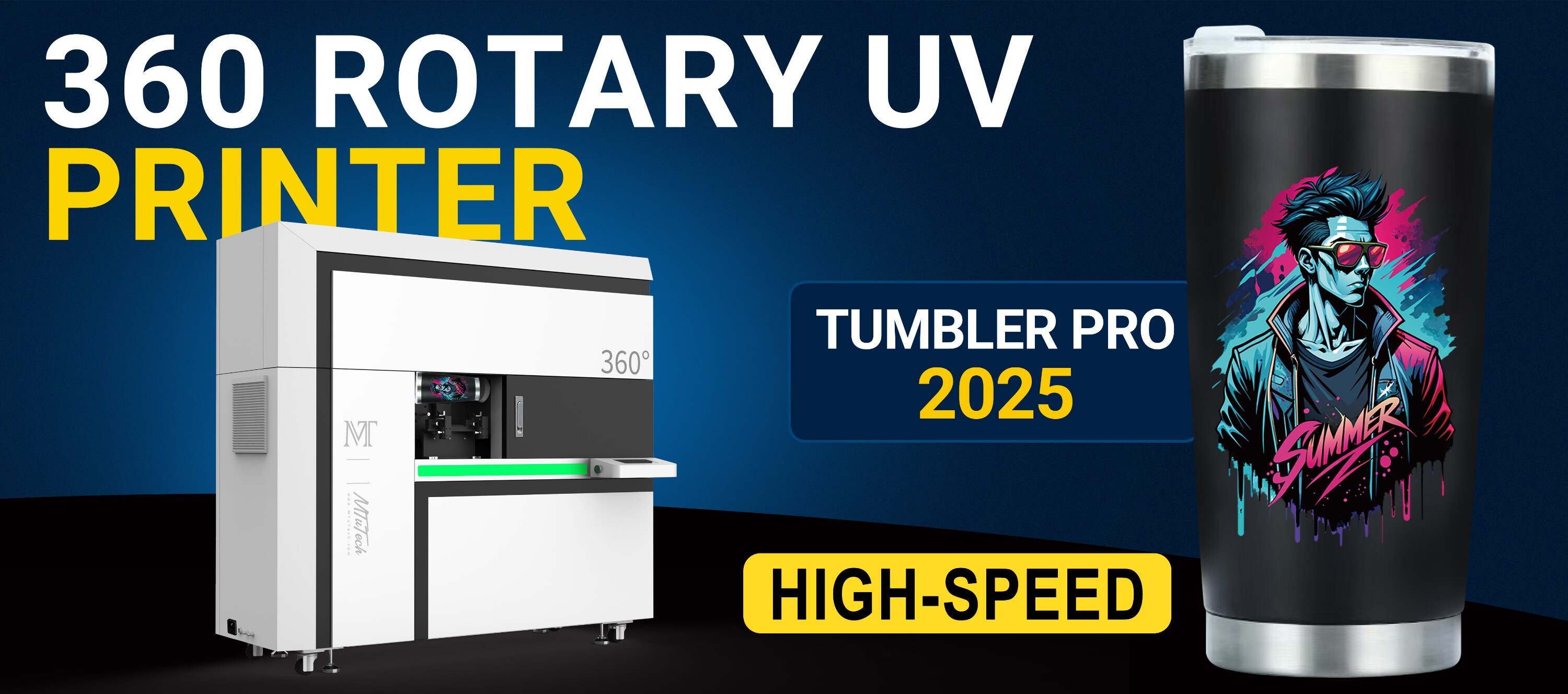Tumbler Printer Buying Guide for First-Time Users
Introduction
Tumbler printers have become increasingly popular among crafters, entrepreneurs, and businesses looking to customize drinkware. With the growing market for personalized items, having a tumbler printer can open up new avenues for creativity and profit. However, if you’re a first-time user, the variety of options available can be overwhelming. This guide aims to simplify the buying process by highlighting essential features, benefits, and tips for selecting the right tumbler printer for your needs.
Understanding Tumbler Printers
A tumbler printer is a specialized device designed for printing designs and graphics onto drinkware such as tumblers, mugs, and bottles. These printers use various technologies, including dye-sublimation, and UV printing, to deliver high-quality prints that are durable and vibrant. The choice of printing technology plays a significant role in the printer's performance and the overall quality of the final product.
Benefits of Owning a Tumbler Printer
Investing in a tumbler printer is advantageous for several reasons:
·
Customization: Create unique, personalized products for customers or yourself.
·
·
Cost-Effectiveness: Reduce outsourcing costs by producing drinkware in-house.
·
·
Quality Control: Have complete control over design quality and production speed.
·
·
Market Demand: Tap into the lucrative market of customized products.
·
Key Features to Consider
When selecting the right tumbler printer, consider the following key features:
1. Printing Technology
The printing technology you choose will significantly impact the quality of your prints. Understand the options:
·
Dye-Sublimation: Best for vibrant colors and intricate designs, ideal for polyester-coated tumblers.
·
·
UV Printing: Offers excellent adhesion to a variety of substrates, suitable for multiple materials.
·
·
Direct-to-Garment (DTG): Provides high-quality prints and is user-friendly for small runs.
·
2. Print Resolution
Look for a printer with a high DPI (dots per inch) for sharper images and finer detail. A printer with at least 1200 DPI is recommended for high-quality outcomes.
3. Print Speed
Consider how quickly the printer can produce items. If you plan on fulfilling large orders, a faster print speed will enhance your efficiency and productivity.
4. Size and Portability
Assess how much space you have for the printer. Some models are compact and suitable for home use, while others may be recommended for larger working spaces.
5. Ease of Use
Look for user-friendly features such as straightforward software, easy setup processes, and clear instructions. This is especially important for first-time users who may not have a technical background.
6. Maintenance and Support
Choose a printer that is easy to maintain and offers reliable customer support. Check if the manufacturer provides helpful resources, such as manuals, tutorials, and troubleshooting guides.
7. Cost and Budget
Set a budget that not only covers the price of the printer but also includes materials, software, and maintenance costs. While it’s tempting to choose the cheapest option, investing a bit more in quality can lead to better long-term results.
Top Tumbler Printers for First-Time Users
Here are some reputable tumbler printers to consider:
·
Silhouette Cameo 4: This compact cutting machine paired with a sublimation printer can create stunning designs.
·
·
Epson EcoTank ET-2720: Known for its cost-effective ink refills, it’s great for sublimation printing.
·
·
VIVIDIA Heat Transfer Printer: An affordable moving option featuring dye-sublimation capabilities.
·
·
Mutoh ValueJet: Ideal for professionals needing high-speed UV printing.
·
Tips for First-Time Users
Getting started with a tumbler printer can be daunting, but these tips can ease your journey:
·
Start Small: Begin with small batches of products to test your designs and printing processes before scaling up.
·
·
Practice Makes Perfect: Take time to practice different printing techniques and settings to discover what works best for you.
·
·
Utilize Online Resources: Join online communities or forums where you can share experiences, seek advice, and learn from seasoned users.
·
·
Experiment with Designs: Don't hesitate to experiment with different materials and designs to find your niche.
·
·
Stay Organized: Keep your workspace tidy and organize your materials to improve efficiency during production.
·
Conclusion
Purchasing a tumbler printer can be a rewarding investment for creative individuals and businesses alike. By following this buying guide, you can make informed decisions that suit your needs, preferences, and budget. Whether you're aiming to create personalized gifts for family and friends or looking to start a small business, a tumbler printer can unleash endless possibilities. Remember to explore our high-quality tumbler printers to find the perfect match for your creative endeavors. Now, go forth and bring your designs to life!
FAQ
What is the best printing technology for beginners?
Dye-sublimation printing is often recommended for beginners due to its ease of use and the vibrant prints it can produce, especially on polymer-coated materials.
How much does a tumbler printer cost?
The cost of tumbler printers varies widely, ranging from a few hundred dollars for entry-level models to several thousand for professional-grade printers. It’s essential to set a budget that encompasses the cost of the printer and additional materials.
Can I print on any type of tumbler?
No, not all tumblers are suitable for every printing method. Ensure you choose tumblers compatible with the printing technology of your printer, such as ones that are coated for dye-sublimation or versatile enough for UV printing.
How do I maintain my tumbler printer?
Regular maintenance involves cleaning the printer heads, using the correct inks, and following the manufacturer's guidelines for care. Always refer to your printer’s manual for specific maintenance tips.
Is it difficult to learn how to use a tumbler printer?
While there is a learning curve, especially for intricate designs, many printers come with user-friendly software. Additionally, numerous online tutorials and communities can provide guidance for first-time users.

